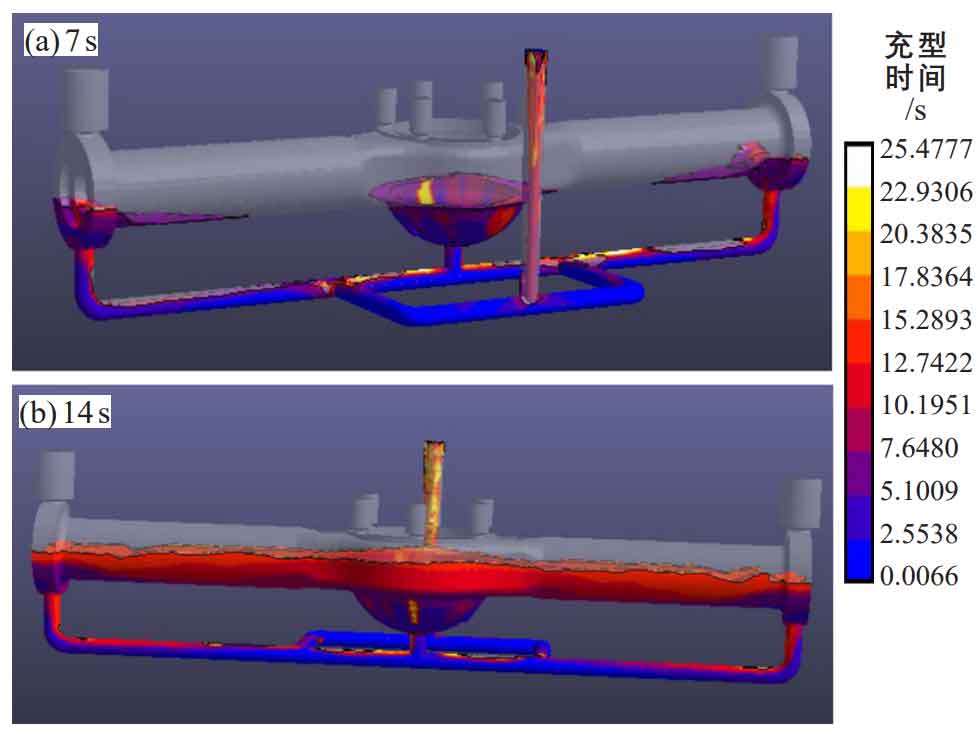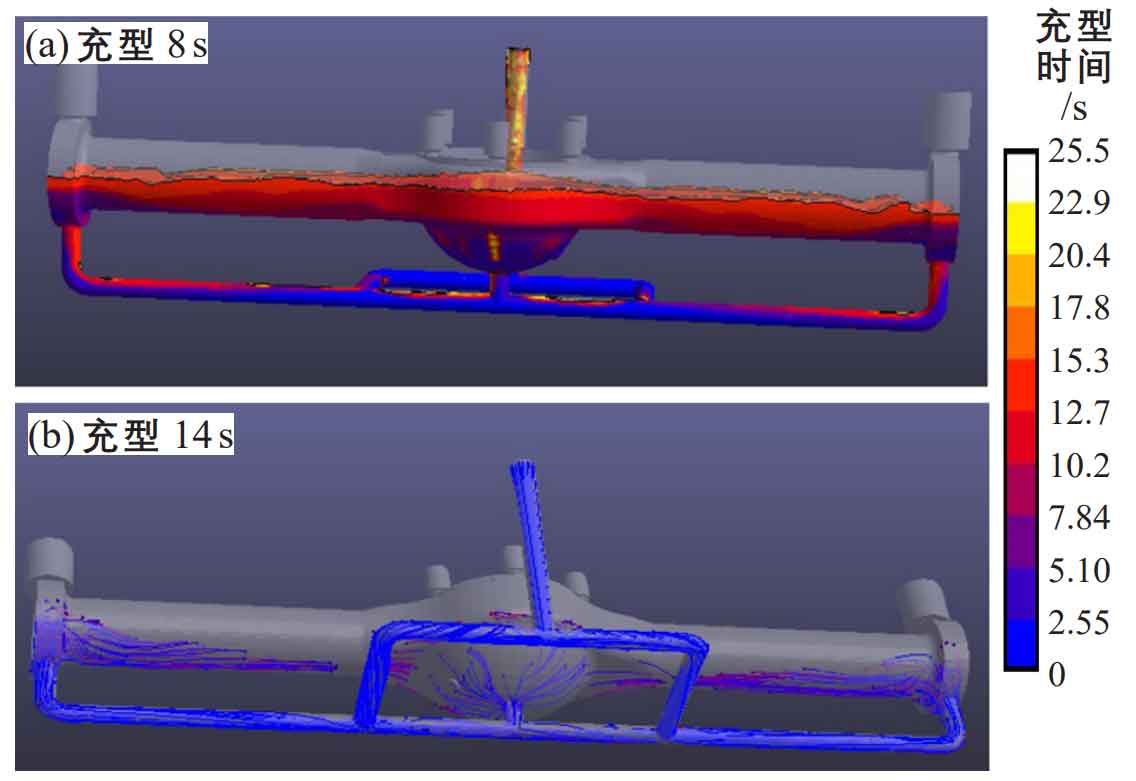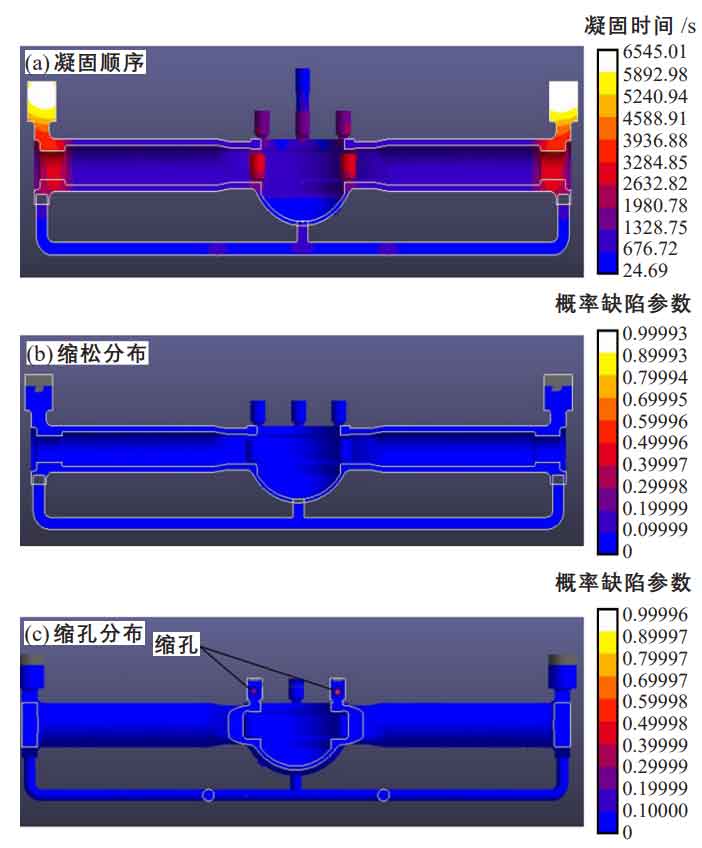1. Simulation of mold filling process of excavator rear axle casting
After improving the process, the mold filling process of excavator rear axle casting is shown in Figure 1. When pouring to 7S, the middle arc area of the rear axle casting of the excavator has been filled with liquid metal and flows into both ends; After pouring for 14s, the liquid metal filling process of the rear axle casting of the excavator was half carried out, and the liquid metal rose steadily in the mold.
Figure 2 is the particle tracking diagram of the improved process of the rear axle casting of the excavator at 8s and 14s after filling. It can be seen from the figure that the particle flow has converged at 8s, and the particle flow rises steadily after 14s.
2. Analysis on solidification process of excavator rear axle casting
The solidification sequence, shrinkage porosity and shrinkage cavity distribution of excavator rear axle casting are analyzed in AnyCasting. From the solidification sequence diagram in Figure 3 (a), it can be seen that the casting of the rear axle of the excavator solidifies from bottom to top. The risers at both ends of the casting of the rear axle of the excavator and the lower riser of the middle arc of the casting of the rear axle of the excavator solidify late, and the lower riser of the middle arc solidifies late, so as to ensure that the lower thin wall can be fully fed during the solidification process, avoid the defects of the thin wall of the arc, and ensure that the casting of the rear axle of the excavator does not shrink and loose at the end of solidification Shrinkage defect. According to the analysis of shrinkage porosity distribution in Fig. 3 (b) and shrinkage cavity distribution in Fig. 3 (c), there are few shrinkage defects at the riser of excavator rear axle casting, but it does not affect the quality of excavator rear axle casting; There are no quality defects such as shrinkage cavity and porosity on the casting of the rear axle of the excavator.



